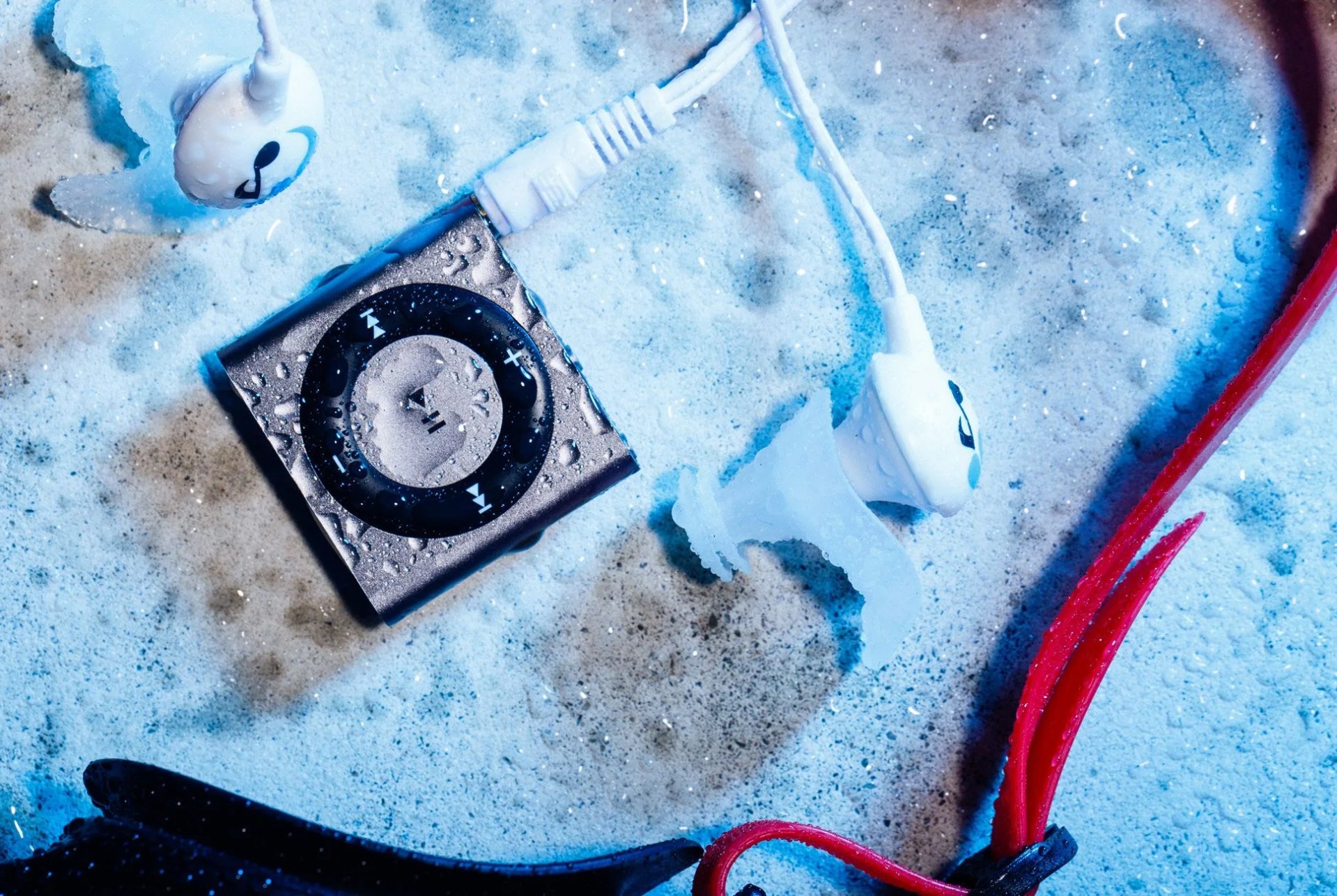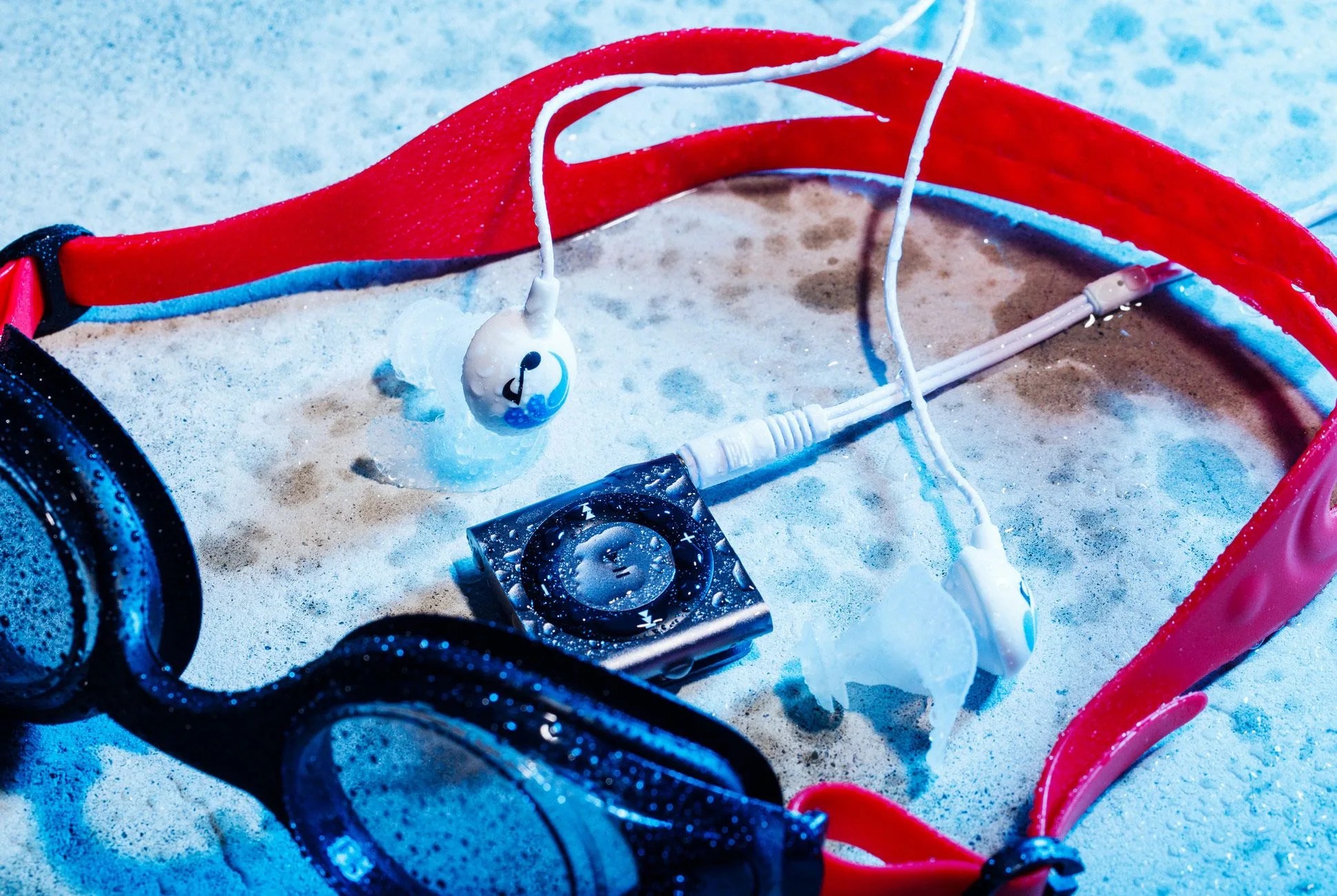Myth: Bluetooth signals can’t travel through water. They can — just not as well as they travel through air. In water, the Bluetooth signals attenuate at a dramatic rate. “It falls off with the square of the distance,” says Todd Walker, founder of Underwater Audio. Also, when the signal has to travel through air and water, it gets degraded further — that’s one of the reasons you can’t take a rugged Bluetooth speaker into a pool, stick it underwater, and still hear music. In other words, distance is the problem: if the audio player and wireless headphones are two feet apart, and you move them two feet farther apart, the Bluetooth signal’s strength is reduced four times over. You can’t just leave your phone on the side of the pool, jump in the water and go.
As a solution, Underwater Audio designed a small, waterproof, Android-based audio player, named the Delphin, and a pair of waterproof Bluetooth in-ear headphones, the Swimbuds Bluetooth. The audio player clips to the back of the swimmer’s goggles, a few inches from the headphones, where the Bluetooth signal can be strong. “This combination enables a swimmer to enjoy the same wireless headphone experience as a runner, as long as the content is downloaded to the Delphin prior to the swim,” Walker says. If you have Spotify Premium, Apple Music or Pandora Premium, you’re good.
Both the Delphin and Swimbuds are still in their crowdfunding stages, however, meaning that Underwater Audio — a six-year-old audio company out of Western Oregon — has made its living making analog in-ear headphones for swimming. That in itself is quite difficult, Bluetooth or not. “You can close headphones up and make them waterproof, or you can leave spaces open and have good sound quality, but to do both of those is really hard,” Walker says. “Other [companies] have attempted to put a Goretex membrane called ‘The Vent’ in the headphone, which is supposed to keep water out and allow air in and out of the headphones…It’s not what we do. That does not work.”
“You can close headphones up and make them waterproof, or you can leave spaces open and have good sound quality, but to do both of those is really hard.”
All of Underwater Audio’s in-ear headphones have a unique, patent-pending driver system called HydroBeat technology. It doesn’t have a vent, yet it still produces good audio, Walker says. Depending on the model, the in-ear headphones keep water out of your ears in different ways. The entry-level Swimbuds create a seal by pushing the earbud against your ear. The higher-quality Swimbuds Sport have suction fit, which is more comfortable, according to Walker. Each pair of headphones has a shortened cord, designed to plug into the mp3 player that’s clipped to back of the swimmer’s goggles. (No tangling problems.) They also come with more than your average variety of tips and airtight earwings.

With five different models, Underwater Audio makes a wider variety of swim-proof headphones than other companies you’ll find. In addition to having high Amazon ratings, its headphones are also the go-to choice for professional swimmers like Rebecca Soni, who won multiple gold and silver medals at the 2008 Beijing and 2012 London Olympics.

